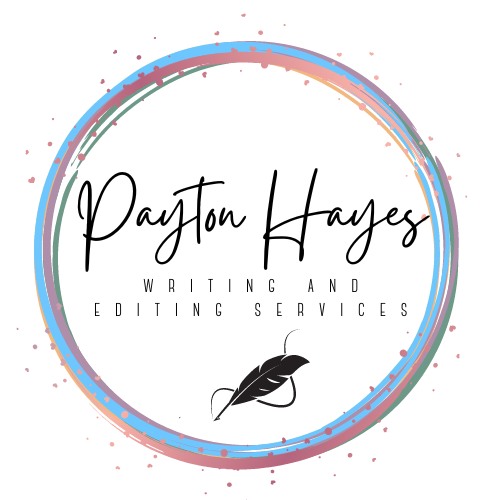How To Write Effective & Believable Love Triangles
Hi writerly friends!
This week, in Freelancing, we’re talking about the dreaded love triangle. I know, I know, some of you are moaning and groaning about this, but what if I could tell you there is away to write the love triangle trope in such a way that won’t get you crucified by your readers? What if I told you not all love triangles are bad?
Okay, now you’re rolling your eyes.
But hear me out—the reason bad love triangles are bad is because they’re shallow and have no substance. The characters have no real connection with each other, the reader feels no real connection to the characters, and ever move they make is founded in shallow, superficial misbelief. With these kind of love triangles (most love triangles, if I’m being honest) is that everything is so painfully surface level.
Not only do the characters have no real connection to themselves or the reader, but they lack connection to their internal conflict as well. Everything is stagnant and predictable, and chances are, you’ve got it all figured out by page two. Who wants to read a book where they’ve got the love triangle figured out by page two? I certainly don’t, and I’m sure neither you nor your readers want to do so either. So, is there a way to actually make this plot device interesting? Is there a way to revolutionize the love triangle and breath fresh life into it? Yes. That’s why I’m going to show you the secret to a good love triangle (yes, it does exist). It all begins with know what NOT to do.
Don’t make your love triangle simple
Three friends enjoying an afternoon drink together. Photo by Helena Lopes.
Of course, usually, I would advise the KISS method (Keep It Simple, Sweetie) but this time I’m advising against it. The reason so many love triangles fall flat is because they’re too simple and predictable and the reader can figure it out by the end of the first page. This is old and well overplayed since most of the time we already know who the main character will end up with anyways. The reason it’s a love triangle and not a love line is because it’s supposed to be confusing, complicated, and challenging to the main character (remember the three C’s and you’ll be fine). And perhaps we should do away with love triangles altogether —a love web would probably be the better descriptor for what we’re shooting for, since a web is less linear and therefore lest predictable. Weave together plots and characters’ unique storylines, use suspense, character, pacing, rising and falling tension, and amp up the drama in your love story.
Allow the triangle to bring out the internal conflict
This pretty much applies to any genre or method of storytelling, but if something doesn’t challenge your characters, force them to fight for their desires, confront their fears and upend their entire life as they know it, then the reader will lose interest. Now, I don’t mean they have to go on some crazy big adventure, but whatever internal and external conflicts they are dealing with need to be meaningful, they need to matter, and they need to be able to shape your characters in a non-superficial way. Put your characters out of their comfort zone instead of simple asking “which one will she chose,” especially if by the end of page one, we already know which one she will choose.
Not only is this overdone and sooo predictable, but it’s devoid of the electricity that lights up a story—the internal conflict—when the protagonist is forced to confront their greatest fear, crush their misbelief about the world, and ultimately achieve their greatest desire all while developing as a character and delivering a powerful message to the reader. When it comes to story writing, everything happens for a reason, and therefore, the reader needs to know why something matters to the characters. If the reader doesn’t see why it matters to the characters, then they won’t see why it should matter to them.
I’m going to let you in on a little secret here: you can use any literary device in your story, no matter how cliché or overdone it is, so long as it directly engages with the main characters inner conflicts, brings them to a fear versus desire decision and forces them to reckon with despair before reaching their aha moment that will bring their character development full circle. That’s right, any device. You’re welcome.
If the external conflicts are continuously forcing your character closer to their internal conflict, then you’re doing it right. Additionally, if the other characters are doing the same thing—being forced to confront their internal conflict—then using a love triangle would make so much more sense not only are the external forces at play here, but everyone’s messy emotions and tangled inner conflicts should be at play as well. Consider how your love triangle can cause all of your characters to either confront their fears or run from them?
Make the love triangle a catch 22 for the protagonist
For the most part love triangles should really only be used to force your characters to make a decision they otherwise would shy away from and force your readers to feel for the characters in said sticky situation. Anyone who reads and enjoys the trope will tell you they aren’t reading it because it’s realistic—in fact I’ve venture to guess most of us never have and never will find ourselves in such a predicament but it’s the ability to put ourselves in another’s shoes and feel for them and the tough decisions they have to make that makes the love triangle work.
However, their decision really has to mean something to the character. It needs to be an ultimatum for them, and it needs to really holds weight for it to resonate with your readers. It cannot simply be “which person will I chose”.
no.
No.
NO.
Three college students standing on campus. Photo by Alexis Brown.
The stakes just aren’t high enough and pressure for the reader to stay invested isn’t painful enough in this case. It goes way deeper than that—it goes all the way to your protagonist’s deepest fear and greatest desire.
Ask yourself these questions before using the love triangle
There are a few questions to ask yourself before writing the love triangle. It might take you a while to come up with the answers for these but trust me, it will make writing convincing, compelling, and challenging situations for your character much easier and you will better understand how the love triangle is directly linked to the characters internal conflicts. Additionally, your readers will be so engrossed in your story, they won’t even notice that you’ve just revolutionized one of the most hated tropes of all time.
Here are the questions:
What is my protagonist’s inner conflict and how did it lead them into this love triangle?
If they’re being honest with themselves, the real reason they’re stuck in this love triangle is because_________?
How does this love triangle cause all three characters to face their fears?
What would it take for the protagonist to overcome their fear and make the right choice?
How high are the stakes and how hot is the fire beneath the protagonist’s feet to make a decision?
Answer those questions and you’ll know how to link the internal conflict and the love triangle in a meaningful way. Trust me when I say, as long are you’re drawing on the internal conflict, you can’t go wrong and the reader certainly will be invested. It’s all in the way you play with the protagonist’s greatest desire and deepest fears.
And that’s it for my guide on how to do love triangles the right way. I know, unpopular opinion, but I think they can be done, and well, I might add. I think the reason we’ve seen so many badly written love triangles, is because it’s a plot device (something used to drive the plot) and instead writers are using it as a surface-level element. Over the years, we’ve forgotten how to really use this device effectively and that’s why it had gotten to exhausting and boring to read over and over again.
Anyways, that’s it for this week’s post in Freelancing. I hope you enjoyed reading this and if the guide helped you better your love triangle game, let me know in the comments below! Don’t forget to like and sign up for my email newsletter to get awesome, actionable writing advice straight to your inbox each month! As always writerly friends, thanks for reading!



